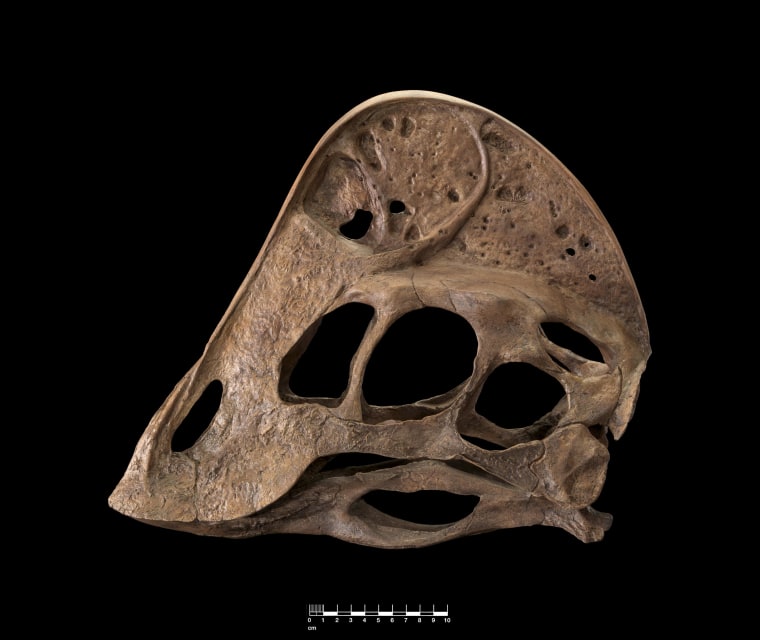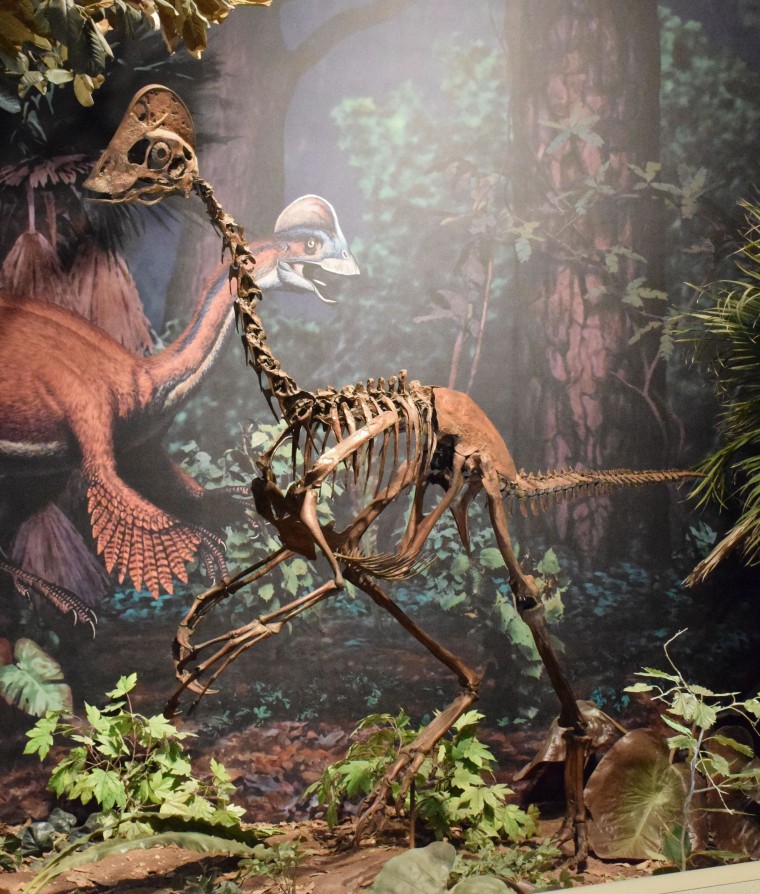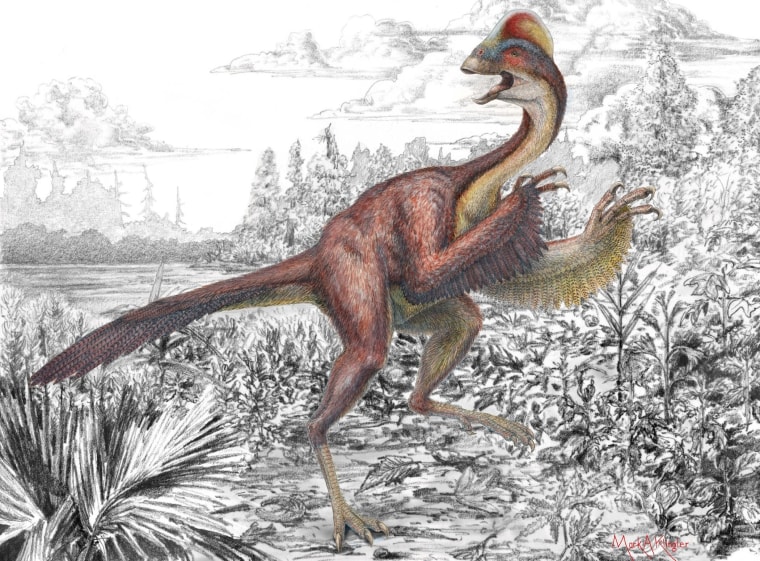An analysis of three different fossil skeletons has produced the most complete picture yet of a bizarre birdlike dinosaur that stood about 10 feet tall, weighed 500 pounds and brandished sharp claws to counter potential predators like Tyrannosaurus rex.
"We jokingly call this thing the 'Chicken From Hell,' and I think that's pretty appropriate," Matthew Lamanna, a paleontologist at the Carnegie Museum of Natural History in Pittsburgh, said in a news release heralding a newly named species called Anzu wyliei.
The creature, which lived around 66 million years ago in the Dakotas, could be considered a mashup on several levels. It had the crested head and toothless beak that would typically be associated with a modern-day flightless bird known as the cassowary, and it probably sported feathers as well. But it also had the sharp claws and robust tail of a dinosaur.
The shape of its skull and jaw suggests it was an omnivore, capable of chowing down on meat and stolen eggs as well as plants.
Even its scientific name is a blend of the horrible and the adorable: "Anzu" refers to a birdlike demon in Mesopotamian mythology, while "wyliei" comes from Wylie, the name of a museum trustee's dino-loving grandson.
Four experts join forces
In 2005, Lamanna joined forces with three colleagues to analyze three separate partial skeletons that were dug up from the Hell Creek Formation of North and South Dakota. The other members of the team were Tyler Lyson and Hans-Dieter Sues of the Smithsonian Institution's National Museum of Natural History, and Emma Schachner of the University of Utah.
Schachner said it took years for their collaboration to bear fruit, "since all of us had busy schedules." The analysis finally came out Wednesday in the open-access journal PLOS ONE.

The team's findings flesh out the paleontological picture for Anzu wyliei as well as other closely related dinosaurs known as oviraptorosaurs.
"For almost a hundred years, the presence of oviraptorosaurs in North America was only known from a few bits of skeleton, and the details of their appearance and biology remained a mystery," Sues said in a news release. "With the discovery of A. wyliei, we finally have the fossil evidence to show what this species looked like and how it is related to other dinosaurs."
Diverse bunch of dinos
Anzu wyliei belongs to a subset of the oviraptorosaurs known as caenagnathids ("see-nig-NAY-thids"). Studies suggest that caenagnathids favored humid floodplain habitats, while other types of oviraptorosaurs thrived in dry conditions.
The team's study of Anzu wyliei supports recent claims that the largest known oviraptorosaur — Gigantoraptor, which weighed in at 1.5 tons — was a caenagnathid as well.
"We're finding that caenagnathids were an amazingly diverse bunch of dinosaurs," Lamanna said. "Whereas some were turkey-sized, others — like Anzu and Gigantoraptor — were the kind of thing you definitely wouldn't want to meet in a dark alley. Apparently these oviraptorosaurs occupied a much wider range of body sizes and ecologies than we previously thought."

Even the "Chicken From Hell" wasn't invincible, however: One partial skeleton included a rib that apparently suffered a break, while another had an arthritic toe that showed evidence of a fracture.
"These animals were clearly able to survive quite a bit of trauma, as two of the specimens show signs of semi-healed damage," Schachner said. "Whether these injuries were the result of combat between two individuals or an attack by a larger predator remains a mystery."
Two of the Anzu wyliei partial skeletons are at the Carnegie Museum of Natural History, while the third is being held in the collections of the Marmarth Research Foundation in South Dakota. A fully articulated replica of the complete skeleton is on display in the Carnegie Museum's "Dinosaurs in Their Time" exhibition.
